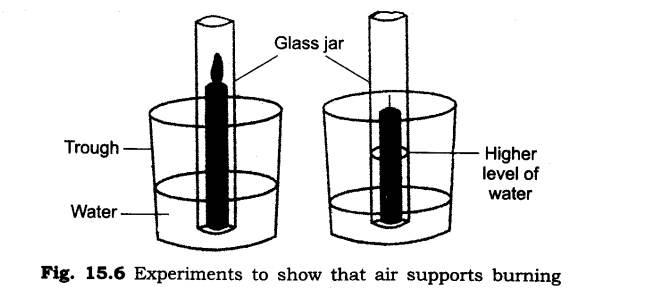Chapter 11
Light, Shadows and Reflections
Exercise
I. Answer the following questions in brief:
Q.1. What else is required to see a shadow besides a source of light and an opaque object?
Ans - When light falls on an opaque object a dark patch is formed on the other side of the object.
Q.2. Is the shape of the shadow of an object same as the shape of an object? If not, give an example proving so.
Ans - No, there is difference in the shape of the shadow as the object because it depends on the position of the sun. For example -
if we see our shadow in morning when sun rises or evening when sun sets our shadow is the largest at this time.
Q.3. How is the image of an object taken from a pin-hole camera different from the object?
Ans - The image formed by a pinhole camera is inverted and smallest in size when compared to the original object. These cameras work on the principle that travels in a straight line.
Q.4. Which property of light helps it to form shadows?
Ans - The reflection and rectilinear propagation of light helps in the formation of shadows.
Q.5. What does a mirror do to the direction of light that falls on it?
Ans - When light falls on a mirror, the direction of light changes.
Q.6. How is a shadow different from an image?
Ans - Image is the reflection of any object while shadow is the area of the object when light falls from a particular angle.
Q.7. Name any four things that can be used as screen for the formation of shadow or image.
Ans - (a) Opaque material , (b) Source of light.
Q.8. Given an activity to show that light travels in a straight line.
Ans - Fix a lighted candle on a table. Take a rubber tube, stretch it straight & look through it the name of the candle with one eye (keeping the other eye closed) we will find that when the rubber tube is straight we can see the light of candle flame through it.

II. Give one term for each of the following:
(a) Object through which light cannot pass at all. Opaque
(b) Figure formed when light bounces from a shiny surface. Reflected Ray
(c) Object which emits its own light Luminous object
(d) Object through which we can see but not clearly. Translucent
(e) Figure formed when path of light is obstructed by an opaque object. Shadow
III. Fill in the blanks:
(a) We need a source of light, an Opaque object and a screen to form a shadow.
(b) Shadows can mislead us about the shape of the object.
(c) Light helps us see objects.
(d) Light travels in a straight line.
(e) Butter paper is a/an translucent object.
(f) The image formed by a pin-hole camera is real or inverted image.
IV. State whether True or False
(a) The shadow of an object gives us a clear idea about its shape and colour. F
(b) Reflection of light is an indication that light travels in a straight line. T
(c) Shadow and image are the same. F
(d) Light can travel through a bent pipe from one end to the other. F
(e) The image of the sun formed through a pin-hole camera is upside down. T
(f) For the formation of a shadow, a source of light and an opaque object are enough. F
V. Match the following:
(a) Reflection - Mirror
(b) Rubbed glass - Translucent
(c) Pinhole camera - Upside down image
(d) Fire fly - Luminous
(e) Shadow - Opaque
VI. Select the correct alternative:
(i) Which of the following changes the direction of light that falls on it?
Ans - c) A mirror
(ii) In the activity shown below, light from the candle is not seen when the middle card board is moved sideways.
This activity shows that
Ans -b) Light travels in a straight line
(iii) What kind of object form shadows?
Ans - b) Opaque
(iv) Which of the following show that light travels in a straight line?
Ans - d) All of these
(v) Which of these are NOT needed for the formation of a shadow?
Ans - d) All of these are needed




